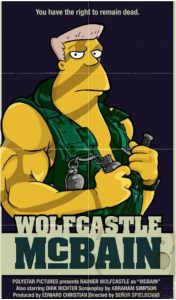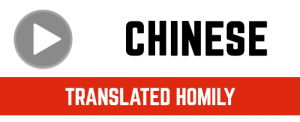In 2015, when assisted suicide was decriminalized in Canada, the reason given was that it would only be for people who were dying, and we were assured that it would be for this limited case. In 2020, the government expanded permission to include advanced directives, meaning that, if we aren’t dying, we could plan to receive euthanasia once we get to a certain point of life; some even advocated that it be offered to people with disabilities because they, too, are suffering. In 2023, the federal government pushed to allow assisted suicide for people with mental illnesses. That same year, pressure began to be applied to the 129 Catholic healthcare providers that supply almost 20,000 beds across Canada to perform euthanasia—the idea was: Not only does it happen in our country, but you’ve got to do it even if you disagree. Because of this constant expansion and normalization people warned that there would be pressure on healthy people to kill themselves. Here is the famous story of Christine Gauthier:
So, current history reveals that when we open up the door for some people to kill themselves, the door opens really wide because of the principle: If someone dying is allowed to kill themselves, what about someone who’s in great pain? In a little pain? Who’s lonely? Furthermore, if someone can decide that their life is not worth living, perhaps other people can decide for them.
Today, in our second of four-part series on euthanasia, we’re meditating on the Responsorial Psalm which is a wisdom psalm outlining the two paths the human person can take: The “way of the righteous” (v. 6) or the “way of the wicked”. Its point is that ultimately, there are only two roads in life: Either we follow God or we don’t. For our purposes today, we want to concentrate on the consequences: One path leads to life and one path leads to death.
These paths describe two worldviews: One says life is sacred, given by God, and so we can’t kill ourselves; the other says life is something we control and so we can choose to kill ourselves. There’s no middle ground between these two views. People who believe in euthanasia said ten years ago it was only for dying people, but the past ten years have proven that, if one group is allowed to kill themselves, we’re all allowed to kill ourselves and we’re even allowed to suggest to other people that they may want to consider killing themselves.
This worldview puts people into two classes: The protected and the unprotected class. Remember Mr. Kevin Berthia who was about to jump off the bridge? He’s in the protected class. Everyone believes that his life was worth protecting, so society responded and helped him.
But, for example, Alan Nichols, of Chilliwack, 61-years old, with a history of depression and other medical issues, none of which were life-threatening, was hospitalized in 2019, requested euthanasia, and was killed in a month, despite his brother, on the right, protesting that he wasn’t mentally fit to request it, and despite the fact that Alan’s written reason for death was ‘hearing loss.’ In a sense, he went to the Golden Gate Bridge but was not protected.
Lisa Pauli of Ontario, 47-years old, has been struggling with anorexia for decades, weighs 92 pounds, describes every day as hell, has decided she wants to euthanize herself, as soon as it’s legal for her to do so. She will not be protected.
In a famous case in the U.S., Terry Schiavo had a brain injury, was in a vegetative state, but wasn’t dying. During that time, her husband, Michael, got involved with another woman. Can you guess what happened next? He had children with that woman and then directed that Terry’s feeding tube be removed because he believed that she wouldn’t want to remain alive in a vegetative state. Is it also possible that he wanted to inherit some of her estate? Because human nature is prone to sin, after years of legal battles, he won, and Terry died after two weeks of severe dehydration. When killing is legal, some fall into the unprotected class.
Last week, we discussed how euthanasia is wrong, first, because it goes against the natural intuition for life. Today, we add that it’s wrong, second, because it goes against the standards of civilized society.
 Think of the opposite, a barbaric society: Nazi Germany, genocide in Rwanda, ISIS—what’s the common thread? They treat people like objects that are disposable, instead of as persons who are irreplaceable. In barbaric societies, there is no inherent, inalienable right to life; life is conditional: Some lives are protected because they’re from a certain race, look a certain way, belong to the right religion, or can perform at a certain level. It’s as crazy as this Simpsons’ spoof of Arnold Schwarzenegger called McBain, who’s line in the movie was ‘You have the right to remain dead.’
Think of the opposite, a barbaric society: Nazi Germany, genocide in Rwanda, ISIS—what’s the common thread? They treat people like objects that are disposable, instead of as persons who are irreplaceable. In barbaric societies, there is no inherent, inalienable right to life; life is conditional: Some lives are protected because they’re from a certain race, look a certain way, belong to the right religion, or can perform at a certain level. It’s as crazy as this Simpsons’ spoof of Arnold Schwarzenegger called McBain, who’s line in the movie was ‘You have the right to remain dead.’
But a civilized society holds to the truth that everyone has an inalienable right to life. If you belong to the human family, you have this right. Euthanasia and assisted suicide go against this inherent right to life.
Slogans like ‘Death with dignity’ are misleading, because they’ve led to all the unexpected deaths we’ve covered. This leaflet published by the Nazis in 1938 says, “This person who suffers a hereditary disease has a lifelong cost of 60,000 Reichsmarks to the National Community. Fellow German, that is your money as well.” 
They coined the term “Life unworthy of life.” Historians estimate that this movement murdered 200,000 to 300,000 people. With an aging population in Canada and a shortage of hospital beds, there’s an ever greater temptation to devote resources to the strong and neglect the weak.
In a civilized society, the strong stand up for and speak on behalf of the weak. Against the Nazis, for example, Bl. Clemens von Galen gave a sermon in which he said, “We are concerned with… our fellow human beings! Poor human beings, ill human beings, they are unproductive, if you will. But does that mean they have lost the right to live? Have you, have I, the right to live… so long as we are regarded by others as productive?”.
As we said last week, we’re not arguing to let people suffer on their own or keep them alive by extraordinary means. We’re saying: Let’s help them, suffer with them, but never cause their death.
Everyone is going to get old or get sick, so we need to protect each other. A simple thing we can do is say to each other that we’ll never choose MAiD, assisted suicide, or euthanasia. If we’re at a hospital, then tell the staff straight up.
Today, we have sign-up cards in the pews for 40 Days for Life. If you’re able to sign up for one or more shifts, please do. And please sign up with a friend so that you’re not alone.
Also, as mentioned, we’re going to show graphic photos and a video of abortion in two weeks, so, if you don’t want to see them or don’t want your children to see them, please feel free to look down, close your eyes, or go to Mass somewhere else (but, please don’t donate to that other church. Just kidding).
There’s a great push to disrespect life, but, with God’s grace, we speak up. Here’s another famous Canadian story:
Ultimately, there are only two ways to approach life: When life is sacred, we’re all protected. When life is something we control, then there’s the protected and unprotected class. With God’s grace, let’s choose the way of the righteous.
